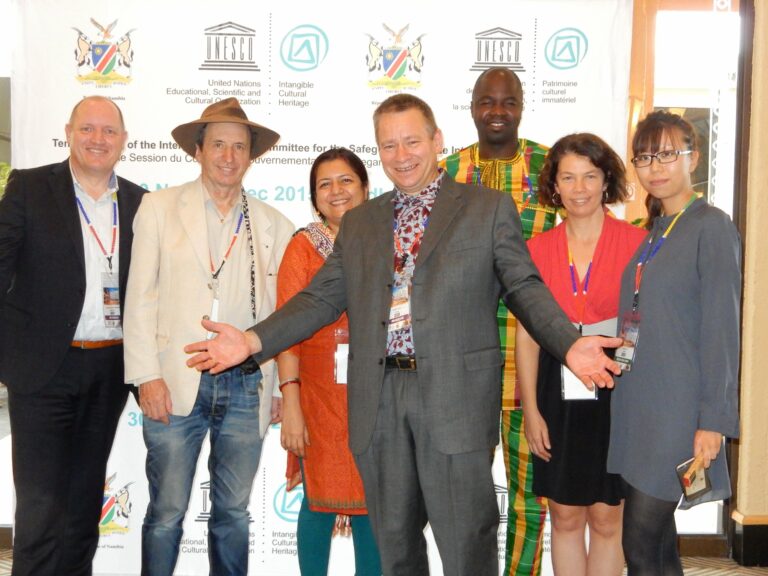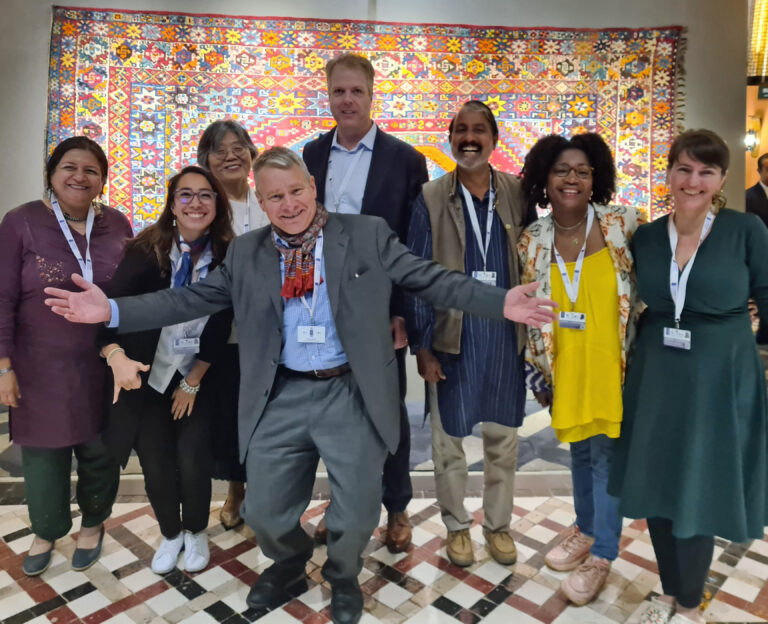Mind the gap
Eivind Falk
Director Norwegian Crafts Institute / Editor-In-Chief #HeritageAlive since 2012
I remember well the first committee meeting I attended. It was in Abu Dhabi at the 4.COM in 2009. We were just a handful of NGOs, but we had our first meetings around a round table, in order to establish a common ground and a direction for our work. These first steps continued with NGO-meetings in Nairobi (5.COM) and Bali (6.COM) where we had more NGOs joining. It is wonderful to see how the NGO Forum has emerged into a well-organized and professional structure. We need a strong forum for the NGOs, as the NGOs play such a crucial role to the Convention. The NGOs represent the bridge between the communities and the State Parties. In London they use the expression “Mind the gap” when people are entering the train or the tube. This expression is also relevant in the ICH-context. The NGOs are closing the gap. We are, as Albert van der Zeiden used to say, the cultural brokers. For the 2003 Convention, this role is in particular important, as the ownership of the living cultural heritage belongs to the communities, bearers and practitioners. I do believe that the Intergovernmental Committee needs the presence of the NGOs at the meetings, as the NGOs represent a bridge to the heart of the convention, the communities, bearers and practitioners concerned.
For the Norwegian Crafts Institute, working with the Convention for many years, has provided us with a more holistic approach to our work. Traditional Crafts, which is the institute’s main topic, are always connected with other domains, and therefore need to be understood in a broader perspective. Traditional crafts are more than a recipe that can be expressed on a piece of paper. When building a traditional wooden boat, one also needs knowledge about nature and the universe, in order to identify the good materials, to understand behaviours of the boat and to navigate. Oral traditions related to traditional boatbuilding are important when handing down knowledge to a new generation, and of course also when one is on the sea. Performing arts as the shanty tradition is also a part of the element related to traditional boat building. Lastly the social and cultural functions in the community and among the bearers are important and need to be taken into consideration in order to get an insight into the tradition. Our work related to the convention has made us more aware of the complexity in the living heritage.
Can Traditional Crafts and ICH save the world?
I strongly believe that the major subject related to the 2003 Convention for the next 20 years will be climate change and a more sustainable future. The 2030 Agenda for Sustainable Development, adopted by all the member states of the United Nations in 2015, provides a shared blueprint for peace and prosperity for people and the planet.
Intangible cultural heritage is always in people, represented by communities, practitioners and bearers as explained in article 2 in the convention. Can we learn something from the ICH-bearers that could help towards a greener path and a more sustainable future? Let me use an example from the world of traditional crafts in the western part of Norway:
Hege Iren Aasdal is a skilled basket maker who lives and works in the western part of Norway. Her favourite material is willow. She doesn’t have to walk far to find the perfect material for her baskets, just down the road. She uses traditional hand tools to gather and split the willow. The baskets are crafted by hand, as they have been for generations.
Hege’s baskets are beautiful and will last for ages. They can also easily be mended, if needed. In essence, the production of Hege’s baskets requires neither petrol for transporting materials nor electricity for the production and involves only environmentally friendly materials that are renewable. Eventually, if the basket becomes worn and damaged beyond repair, it can decompose naturally and contribute to the growth of new trees. Therefore, when pondering if traditional crafts can play a role in preserving our planet, Hege’s basketry could be one of several examples.
In 2016, the United Nations enforced the 17 Sustainable Development Goals of the 2030 Agenda for Sustainable Development. These goals are fundamental for fostering a recovery oriented towards greener, more inclusive economies, and stronger, more resilient societies. Addressing global challenges such as poverty, inequality, climate change, environmental degradation, peace, and justice, the Sustainable Development Goals aim at achieving a better and more sustainable future for all. Drawing parallels with Hege’s basketry, we can suggest several ways traditional crafts can contribute to the United Nations Sustainable Development Goals. Examples include taking urgent action to combat climate change and its impacts, and advocating for a more sustainable management of our forests.
The example of traditional basketry illustrates how traditional crafts, as defined by the 2003 convention, can drive transformation towards a more sustainable future. Although I highlight Hege’s basketry, numerous other examples could serve the same purpose, and demonstrate how traditional crafts can contribute to the green shift. I could also have picked examples that represent other traditional crafts, such as textiles, clothing, furniture making and blacksmithing. Indeed, thousands of such examples world-wide can help us towards a more sustainable future.
Traditional knowledge, cultivated and passed on from generation to generation, ensures optimal integration of humans in their environment. This approach promotes a sustainable use of natural resources, with minimal waste and built to last. While I am not implying that traditional crafts alone can help us in our endeavours towards achieving the UN’s goals for a more sustainable future, I firmly believe that traditional crafts are an important part of the solution.
Sharing experiences from the field
In 2012, at the meeting of the Intergovernmental Committee of the UNESCO 2003 Convention in Baku, Azerbaijan, the NGO Forum decided to establish an online journal with the title #HeritageAlive.
The journal sought to share NGOs experiences regarding safeguarding practices, both good and bad, within the area of Intangible Cultural Heritage. The concept was to share knowledge from fieldwork in communities and with practitioners, between the UNESCO accredited NGOs and experts, in order to learn from each other. An editorial board was formed, with members from all over the world, and I was elected as the Editor-in-Chief. The online journal has published articles on a variety of different themes concerning Intangible cultural heritage and safeguarding, such as articles on traditional crafts, festivals and naming practices.
Whilst the interest in the journal remained relatively steady, interest peaked after a call for papers was made in relation to Traditional Medicine. As a result of the overwhelming response, we decided to publish a book, dedicated to the theme of Traditional medicine in cooperation with ICHCAP. The publication on Traditional Medicine was highly appreciated and supported by the NGO Forum, and we decided to continue our fruitful cooperation with ICHCAP. This has resulted in four publications where we share NGOs safeguarding experiences from the field. The publication on Traditional medicine in 2017 was followed by publications on Traditional Food (2019), Traditional Musical Instruments (2021) and Storytelling (2023). Together with ICHCAP we have launched the books at the committee meetings, and we have tried to give the audience an insight related to the examples highlighted in the publication. In Bogota we served traditional food and drinks related to the traditions in Colombia as a part of the launching. For centuries, cooking minced corn with sugarcane honey and its subsequent fermentation has given origin to chicha, a fermented beverage made in various regions in Colombia, but still not comme-il-faut. Unfortunately, it was therefore prohibited to serve the traditional Chicha, at the launch. Ironically, a project for removing the Government’s unfair ban of la Chicha was the topic of the article from Colombia. Luckily, we managed to bring a couple of bottles back to our hotel, smuggled them in, and had a taste of the wonderful, but banned, chicha.
For the event related to the publication on Traditional Musical instruments, we decided to move the launch to the general assembly Paris in 2020, because of the pandemic. More than 100 people attended this wonderful event, and even if the room provided was limited in space, we decided to spice up the presentation with a demonstration of live music. It all ended up in a lovely warm chaos of rhythms, dance and presentations from the authors and practitioners concerned. Truly in the spirit of the Convention.
One of the most wonderful experiences I have had with #HeritageAlive is working with board members from all over the world, representing different domains and knowledge. This has been the key to achieving our goal. Some of the board members have been with us from the start, and others have joined on the way. Without this hardworking and dedicated Editorial Board we would never have been able to reach our goals.
On our journey, two of our dedicated members of the editorial board, Jean Roche and Albert van der Zeiden, have passed away. Two of the publications have therefore been dedicated to them. In 2022, supported by the NGO-forum, we launched a prize in Albert van der Zeiden’s name. We decided to be the criteria for the winner would be:
- A young writer (under 35 years of age)
- Representing an NGO
- Published an article in #HeritageAlive
- The article should contribute to the NGO’s work in the field of ICH
On 1 December 2022, during the UNESCO 17.COM in Rabat, Morocco, #HeritageAlive and the ICH NGO Forum had the pleasure to award Laura Lopez of CIOFF the first Albert van der Zeiden Prize to recognize her contributions to #HeritageAlive and her work supporting the spirit of the UNESCO 2003 Convention for the Safeguarding of the Intangible Cultural Heritage.
Working alongside with other NGOs all over the world has been inspiring and fruitful. It has resulted in common projects and exchange of craftspeople and experts over many years: Ukrainian craftspeople and musicians have visited Norway, Norwegian hatters have been in India, we have visited salt farmers in Chile, carpenters in Latvia, and Georgia. and there are several other examples. There is always something to learn from each other’s safeguarding practices, and the meetings between craftspeople are always magic. I strongly believe that we have a lot to learn from other NGOs’ experiences, methodologies, programs, activities and practices. Not only the good practices, but also projects and models that have not worked out as desired.
For Norwegian Crafts Institute, and the other Nordic NGOs, the #HeritageAlive-experience inspired us to establish a website for NGOs in the Nordic countries where we could share our safeguarding experiences. After a while, the Baltic NGOs knocked on the door, so in addition to the Nordic countries, Latvia, Lithuania and Estonia also joined the website. Today more than 60 examples on safeguarding practices are shared on this webpage www.safeguardingpractices.co.
The strong Nordic-Baltic cooperation and Safeguardingpractices.com is one of the regional fruits from our work with the 2003 Convention, and the journal #HeritageAlive is another, global one. In the spirit of the Convention, I strongly believe in diversity, creativity and dialogue. The wonderful worldwide community of active NGOs reflects this spirit in the best way, both in their work in the communities and among other NGOs. We are the ones minding the gap.

The #HeritageAlive Editorial Board in Windhoek, 2015.
From left: Albert van der Zeiden, Jean Roche, Ananya Bhattacharya, Eivind Falk, Ki Leonce, Shelley Ochs, and Chang Liu (Photo by: Antoine Gauthier who was also a member of the board)

From the #HeritageAlive editorial board meeting in Rabat 2022.
From left: Ananya Bhattacharya, Laura Lopez, Hanheeh Hahm, Eivind Falk, Antoine Gauthier, Vakil Jayaran, Rachel Gefferie and Paulina Adamaska.

